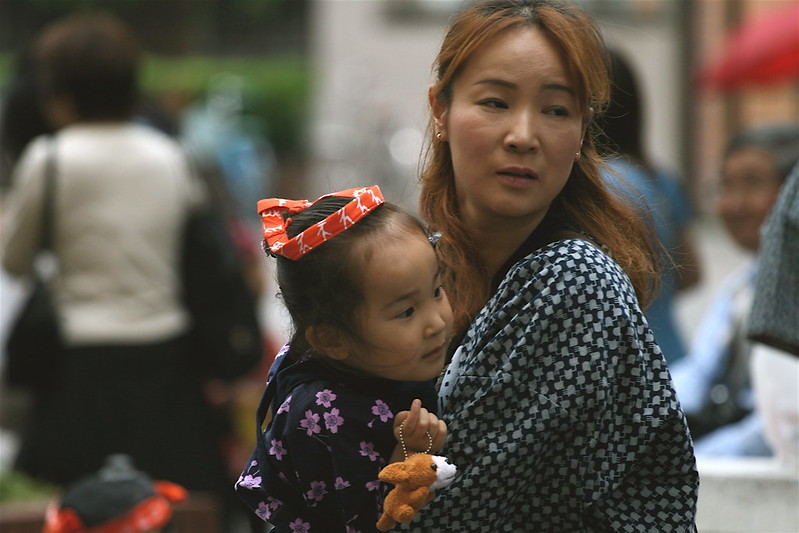Single-Mother Families and Child Poverty in Japan
 Despite being one of the wealthiest developed countries worldwide, Japan grapples with a significant child poverty issue, ranking among the highest in the Organisation for Economic Co-operation and Development (OECD) countries. Alarming statistics reveal that one in seven Japanese children lives in poverty.
Despite being one of the wealthiest developed countries worldwide, Japan grapples with a significant child poverty issue, ranking among the highest in the Organisation for Economic Co-operation and Development (OECD) countries. Alarming statistics reveal that one in seven Japanese children lives in poverty.
Causes of Child Poverty in Japan
A significant factor contributing to child poverty is the high percentage of children living in single-parent households. Approximately 50% of single-parent families, most often mother-children households, fall below the poverty line. The summary report shows that the number of mother-children households is roughly 565,000 in 2022, while the number of father-children households is only 75,000.
Furthermore, the societal structure in Japan predominantly favors full-time male employees, leading to a gender wage gap where women, even those working full-time and overtime, often receive lower wages and fewer benefits. The average income per mother-children household is merely 3.73 million yen ($23,529) a year, compared to 6.06 million yen ($38.199) in “single-parent families with a father.” Nearly two million mothers with children in households have no jobs.
“I feel deprived of my dignity because I’m a single mother, I’m on public welfare, I don’t have enough money for daily food and school and I don’t have a job,” said Mika, a 45-year-old single mother who raises her two children, aged 3 and 7, on her own. “My children would like to join clubs and travel, but I can’t afford it.”
Additionally, 22.5% of mother-child households have no savings, the highest percentage among all types of households. Meanwhile, the lowest percentage of mother-child households have savings. In the self-assessed survey of living conditions, around 39.4% of mother-child households claimed a “very difficult” condition, the highest among all types of households. Only 23.4% of mother-child households think they live in a “normal” condition.
The Japanese Social Care System
The Japanese social care system involves local governments offering protective services to children who are either without parents or whose parents are unable to care for them. The system involves fostering psychological care and local community support goals. Other supportive systems such as psychological treatment facilities for children, facilities to support the development of children’s self-sustaining capacity and maternal and child living support facilities also provide home assistance and daycare to assist children and their parents.
Additionally, a children’s home provides a safe living environment for children without parents or those whose parents are unable to care for them due to abuse, serious health issues, or financial difficulties. According to data from the Ministry of Health, Labor and Welfare, the number of children’s homes in Japan is approximately 600 and the number of children living in such homes is 27,300.
NGOs Providing Solutions
Apart from government support, many organizations are fighting for child poverty in Japan:
- Lights On Children: A nonprofit organization that assists and supports children’s social needs.
- Kids Door: A nonprofit organization that provides education, comfortable homes and career workshops.
- YouMeWe: A Tokyo-based nonprofit organization that nurtures and supports local students from institutionalized homes, helping them achieve full independence by the age of 18 through initiatives like financial literacy programs.
Final Remark on Child Poverty in Japan
These supportive programs and institutes have effectively alleviated children’s poverty. A report from the Ministry of Health, Labor and Welfare indicates a decrease in children’s poverty rate from 2018 (14%) to 2021 (11.5%). The relative frequency distribution of the number of children in households with disposable income shows a drop in the range of less than 400,000 yen ($2,520) and between 400,000 and 1,400,000 yen ($2,520 and $8,820). The frequency of single-parent and children in households also declines in the range between 1,000,000 and 1,400,000 yen ($6,300 and $8,820).
Nevertheless, the Japanese government repeatedly made promises to provide financial support to children in poverty and mother-children households. However, the action was very slow. Akihiko Kato, a professor at Meiji University, has criticized the Japanese government for its sluggish response in delivering financial support to families with children. “It’s one thing we can do more of in society: try to recognize people’s cries for help,” said McAvoy, the filmmaker of Japanese single mother film “The Ones Left Behind.”
– Cindy Hong
Cindy is based in Milpitas, CA, USA and focuses on Good News for The Borgen Project.
Photo: Flickr
